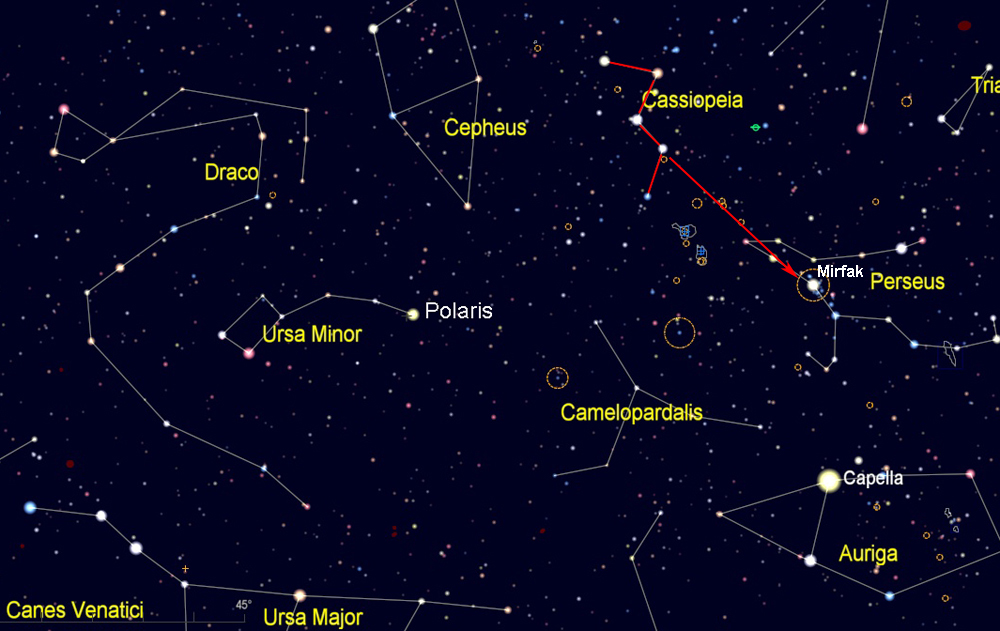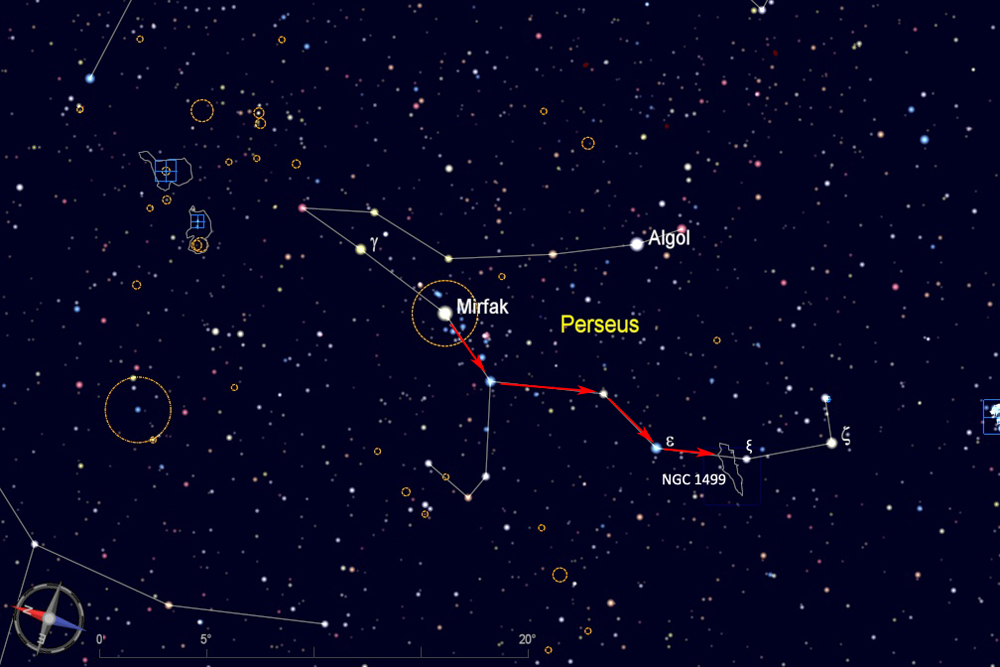Find the constellation Cassiopeia, which has a distinctive "W" shape (although its orientation changes at different times of year as it circles the north celestial pole). On fall evenings, look for Cassiopeia in the northeast, where its tilt makes it look like a "3", and in the winter look high in the north above Polaris, where it is oriented like an "M".
As shown below, use the stars of Cassiopeia to direct you to the nearby constellation Perseus, and its brightest star, Mirfak.

The stars of Perseus are fairly bright. The shape I see is some sort of animal with a curved tail. From the bright star Mirfak, follow a zig-zag line of four stars down the back leg of this animal shape. As shown below, NGC 1499 is between Epsilon (ε) and Xi (ξ) Persei, just about a degree north of ξ. This location is pretty easy to find, but the nebula is hard to see because it is so large and diffuse. Try on a clear moonless night from a dark location.
